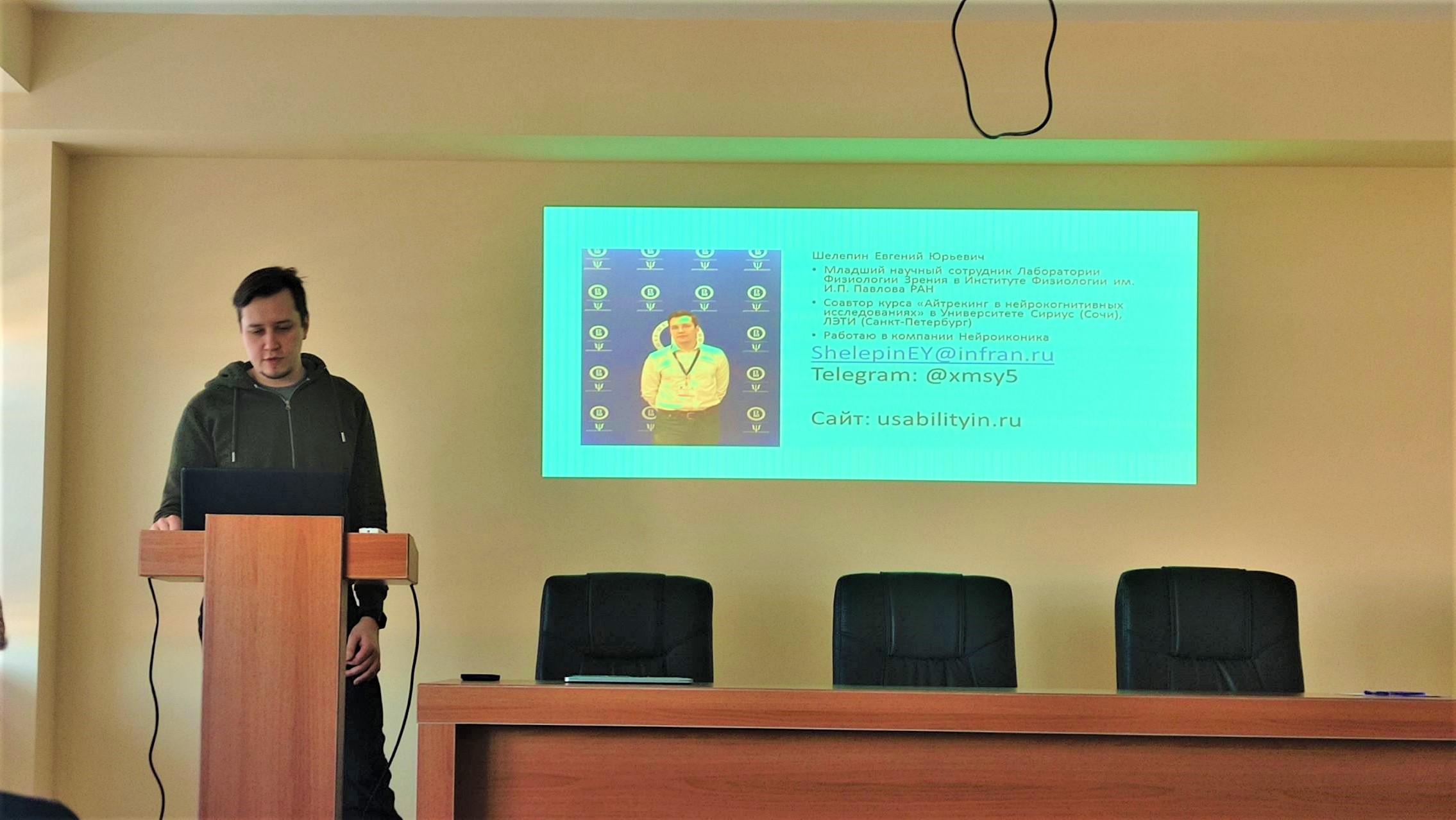On January 25, 2023, a junior researcher of the Laboratory of Physiology of Vision of I.P. Pavlov Institute of Physiology, author of more than 50 scientific papers, Evgeny Shelepin made a presentation and demonstration of the eye-tracking method.
The eye tracker records the position of the eyes in their various states. Fast, spasmodic eye movements—saccades, lasting 10–80 ms—alternate with periods of gaze fixation, lasting 200–600 ms. Objects are perceived during the fixation state, when the gaze does not move and saccades are needed to move the gaze from one object to another. What the eye is focused on will be the clearest, and surrounding objects will be perceived by peripheral vision. Vision is a rather complex process, one of the measuring devices for which is an eye tracker. A gaze tracking device, or eye tracker, consists of a built-in infrared light that reflects in the eyes of the subject and a camera that captures these reflections. Using software, the device then determines the position of the gaze.
Eye trackers today find their application in various fields, from gaming devices to professional ones, which are used in neuromedical research, psychology, sports, education, etc. Rehabilitation eye trackers help people with special needs type text and control the computer with their eyes without assistance. That is, they serve as a replacement for the keyboard and mouse. Stephen Hawking, a British scientist who suffers from amyotrophic lateral sclerosis, communicates, writes his papers, and does science with the help of an eye tracker. Eye trackers are also widely used in cognitive psychology, customer behavior research, interface testing, pilot training, etc.
In conclusion, some institute employees tried the operation of the eye tracker on themselves. The eye tracker displayed a video recording of eye movements, statistics, and visualizations: heat maps and graphs of gaze fixations.
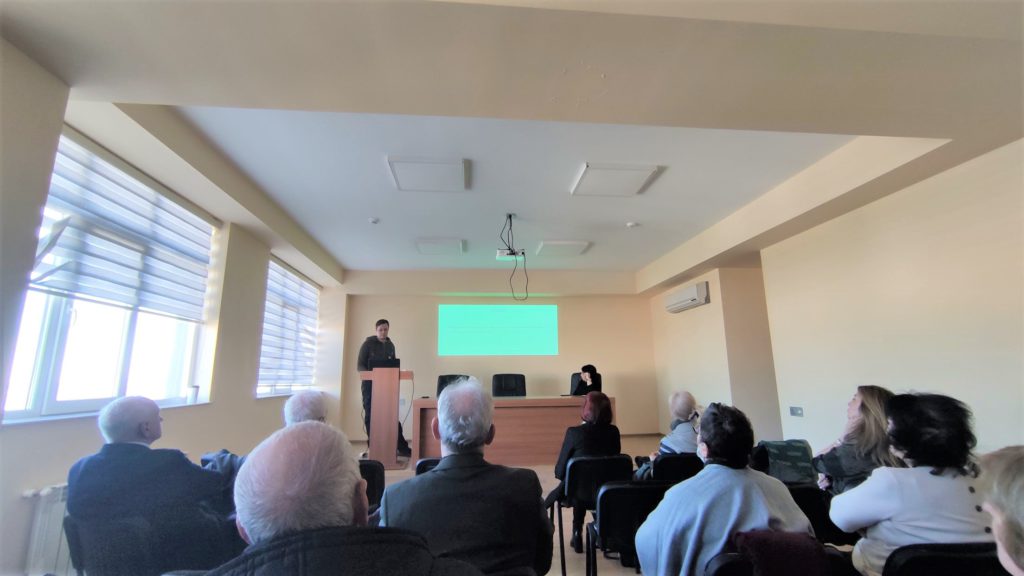
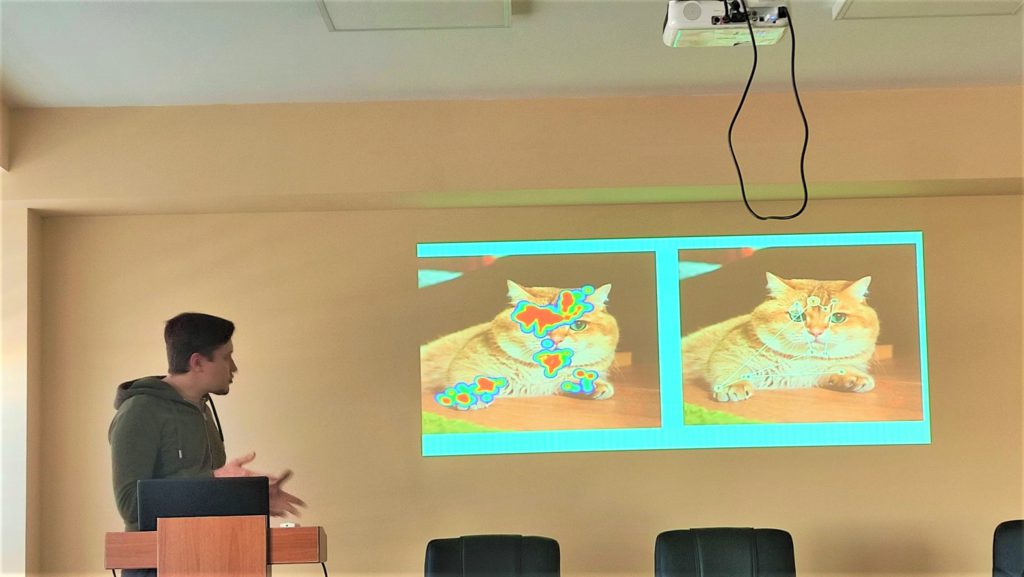
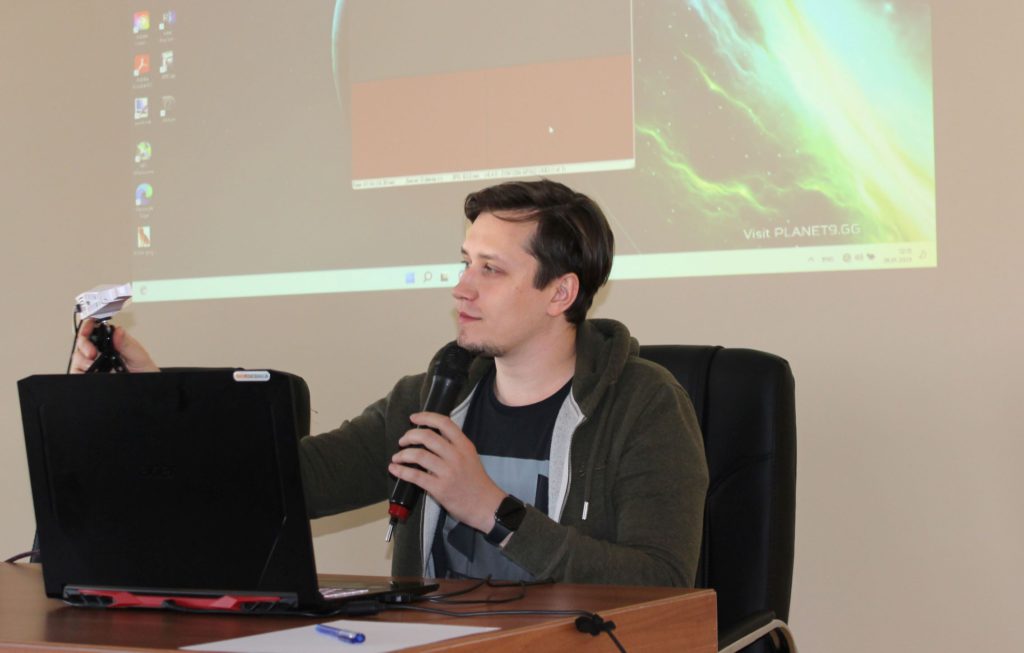
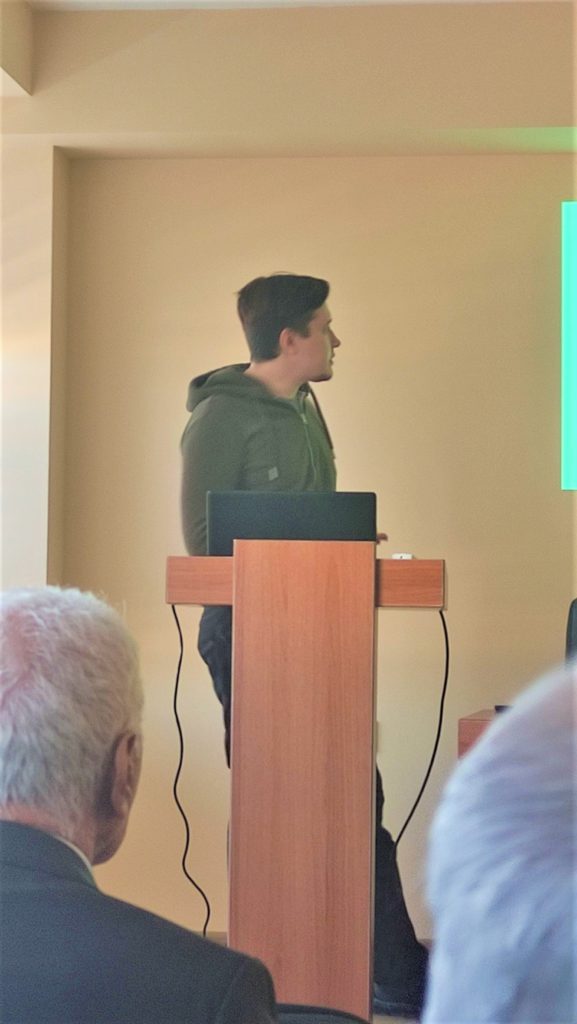
![]()




